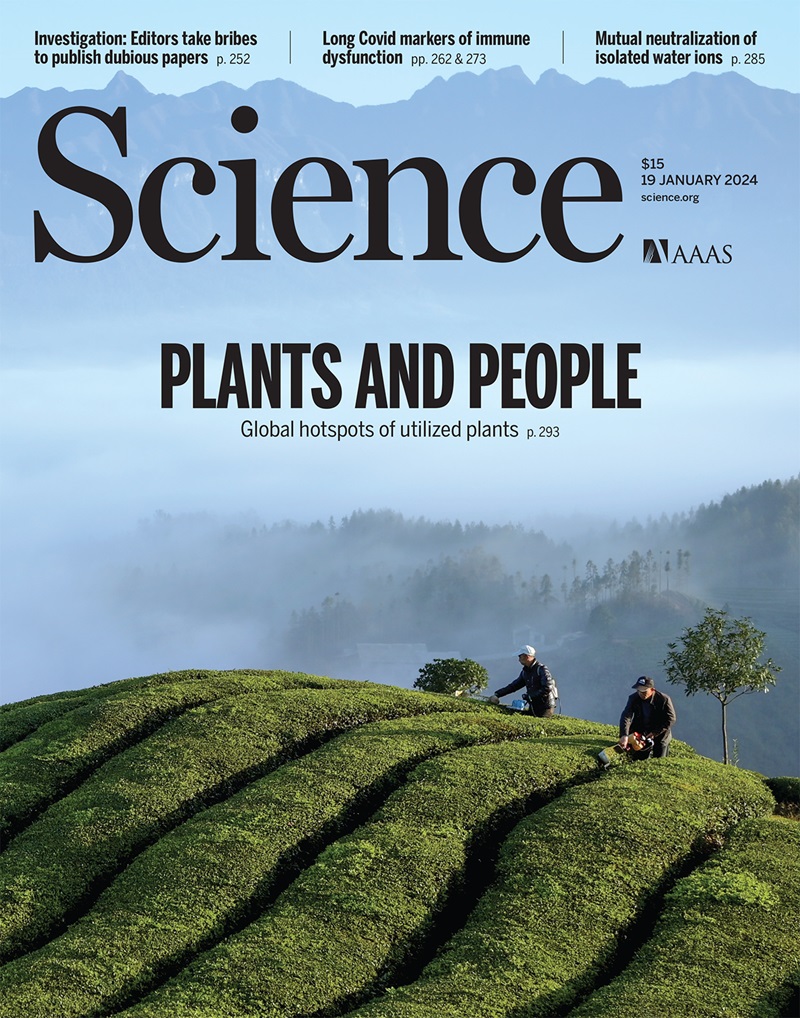Diverse and larger tree islands promote native tree diversity in oil palm landscapes
IF 44.7
1区 综合性期刊
Q1 MULTIDISCIPLINARY SCIENCES
引用次数: 0
Abstract
In monoculture-dominated landscapes, recovering biodiversity is a priority, but effective restoration strategies have yet to be identified. In this study, we experimentally tested passive and active restoration strategies to recover taxonomic, phylogenetic, and functional diversity of woody plants within 52 tree islands established in an oil palm landscape. Large tree islands and higher initial planted diversity catalyzed diversity recovery, particularly functional diversity at the landscape level. At the local scale, results demonstrated that greater initial planting diversity begets greater diversity of native recruits, overcoming limitations of natural recruitment in highly modified landscapes. Establishing large and diverse tree islands is crucial for safeguarding rare, endemic, and forest-associated species in oil palm landscapes.
多样且较大的树岛促进了油棕榈景观中本地树木的多样性
在以单一种植为主的景观中,恢复生物多样性是当务之急,但有效的恢复策略尚未确定。在这项研究中,我们对被动和主动恢复策略进行了实验测试,以恢复油棕景观中 52 个树岛内木本植物的分类、系统发育和功能多样性。大树岛和较高的初始种植多样性促进了多样性的恢复,尤其是景观层面的功能多样性。在局部范围内,研究结果表明,初始种植多样性越高,本地新植树木的多样性就越高,从而克服了高度改造景观中自然新植树木的局限性。建立大型多样的树岛对于保护油棕地貌中的珍稀、特有和森林相关物种至关重要。
本文章由计算机程序翻译,如有差异,请以英文原文为准。
求助全文
约1分钟内获得全文
求助全文
来源期刊

Science
综合性期刊-综合性期刊
CiteScore
61.10
自引率
0.90%
发文量
0
审稿时长
2.1 months
期刊介绍:
Science is a leading outlet for scientific news, commentary, and cutting-edge research. Through its print and online incarnations, Science reaches an estimated worldwide readership of more than one million. Science’s authorship is global too, and its articles consistently rank among the world's most cited research.
Science serves as a forum for discussion of important issues related to the advancement of science by publishing material on which a consensus has been reached as well as including the presentation of minority or conflicting points of view. Accordingly, all articles published in Science—including editorials, news and comment, and book reviews—are signed and reflect the individual views of the authors and not official points of view adopted by AAAS or the institutions with which the authors are affiliated.
Science seeks to publish those papers that are most influential in their fields or across fields and that will significantly advance scientific understanding. Selected papers should present novel and broadly important data, syntheses, or concepts. They should merit recognition by the wider scientific community and general public provided by publication in Science, beyond that provided by specialty journals. Science welcomes submissions from all fields of science and from any source. The editors are committed to the prompt evaluation and publication of submitted papers while upholding high standards that support reproducibility of published research. Science is published weekly; selected papers are published online ahead of print.
 求助内容:
求助内容: 应助结果提醒方式:
应助结果提醒方式:


